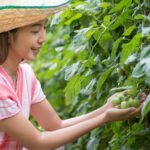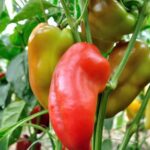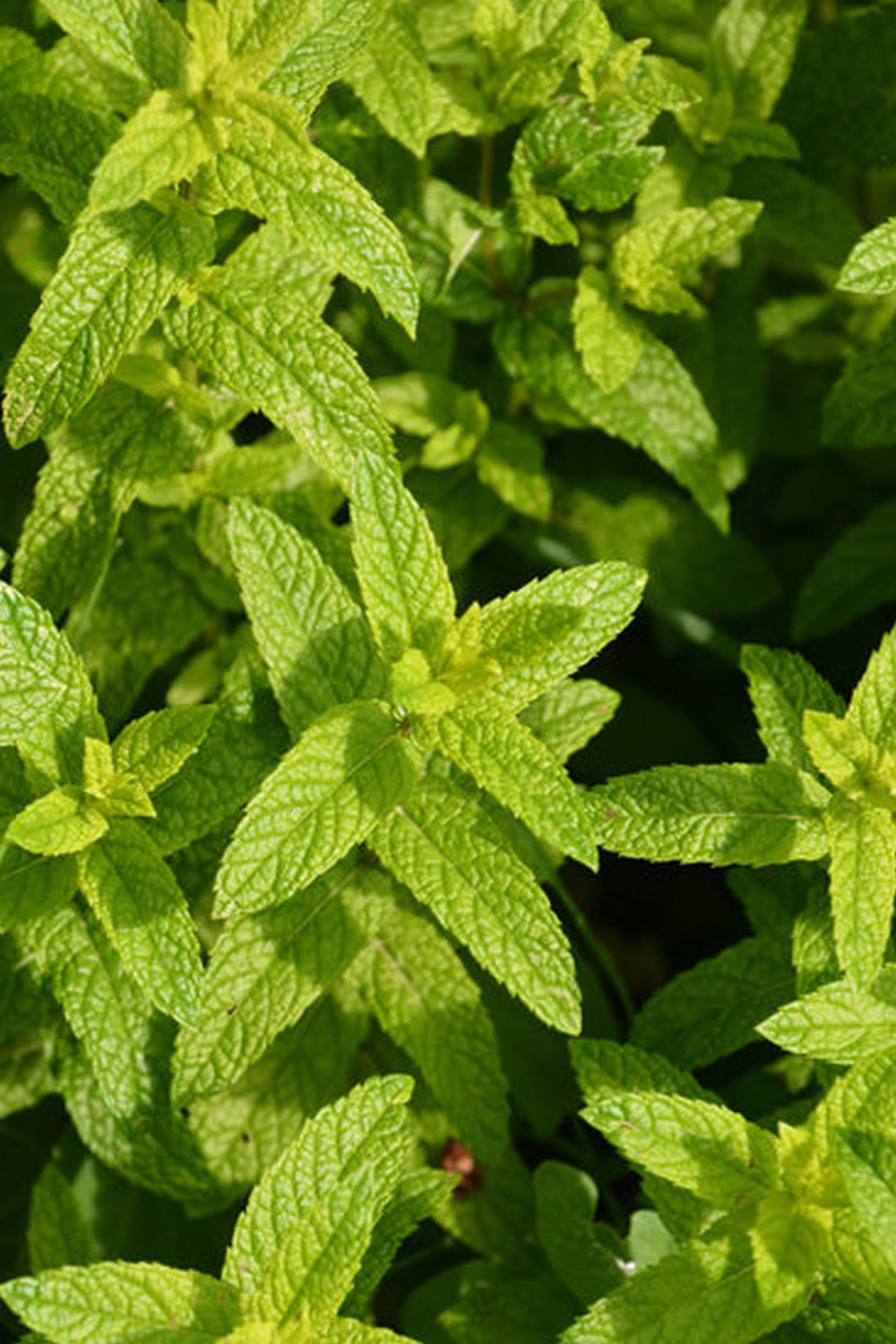Are you interested in maximizing the efficiency of your vegetable garden while minimizing water usage? Sub irrigation vegetable gardening may be the solution you’ve been looking for. This method of gardening, also known as self-watering or sub-irrigated planting, allows for even and consistent moisture levels throughout your garden, promoting healthy plant growth and higher yields.
Sub irrigation vegetable gardening involves a system that provides water to plants from below the soil surface, creating an ideal growing environment for vegetables. In this article, we will explore the benefits of sub irrigation for vegetable gardening, how to choose the right containers, setting up a sub irrigation system, best vegetables to grow using this method, maintenance tips, and troubleshooting common issues.
By implementing sub irrigation methods in your vegetable garden, you’ll not only conserve water but also save time and effort in regular watering. Discover how this innovative approach to gardening can lead to a bountiful harvest of healthy and vibrant vegetables.
Benefits of Sub Irrigation for Vegetable Gardening
Sub irrigation, also known as sub-irrigation or seepage irrigation, is a method of watering plants from the bottom up rather than from the top down. This technique has gained popularity in vegetable gardening due to its numerous benefits. Sub irrigation delivers water directly to the roots, promoting healthier and more efficient plant growth. In this section, we will explore the various advantages of using sub irrigation for vegetable gardening.
1. Increased Efficiency: Sub irrigation provides water directly to the root zone of plants, minimizing water loss through evaporation. This results in more efficient water usage and can significantly reduce overall water consumption in vegetable gardens.
2. Prevention of Water Runoff: Traditional top-down watering methods often result in water runoff, which can lead to soil erosion and nutrient loss. With sub irrigation, water is delivered directly to the root zone, preventing runoff and ensuring that plants receive the moisture and nutrients they need.
3. Reduced Risk of Disease: By avoiding overhead watering, sub irrigation helps reduce the risk of foliage diseases caused by standing water on leaves. This can lead to healthier plants and higher yields in vegetable gardens.
Overall, sub irrigation offers a range of benefits for vegetable gardening, making it an attractive option for both beginners and experienced gardeners alike. By providing efficient and targeted watering, this technique can help optimize plant growth while conserving resources and reducing environmental impact.
Choosing the Right Containers for Sub Irrigation Gardening
When it comes to sub irrigation vegetable gardening, choosing the right containers is essential for the success of your garden. The type of container you use can have a significant impact on the effectiveness of the sub irrigation system and the health and productivity of your vegetables. Here are some factors to consider when selecting containers for sub irrigation vegetable gardening:
1. Size: Choose containers that are large enough to accommodate the root systems of the vegetables you plan to grow. Make sure there is sufficient space for the roots to spread out and access water from the reservoir without becoming waterlogged.
2. Material: Select containers made from porous materials such as terracotta, fabric, or unglazed clay, as these allow for better airflow and moisture exchange between the soil and the reservoir. Avoid using non-porous materials like plastic, which can trap excess moisture and lead to root rot.
3. Reservoir Design: Look for containers specifically designed for sub irrigation gardening, with built-in reservoirs or self-watering systems. These containers typically have a water level indicator that allows you to monitor water levels and refill as needed, making it easier to maintain proper moisture levels in the soil.
By carefully choosing containers that are well-suited for sub irrigation vegetable gardening, you can provide your plants with optimal growing conditions and set yourself up for a successful harvest.
Remember that different vegetables have different requirements when it comes to container size, material, and drainage needs. It’s important to research the specific needs of each type of vegetable before selecting your containers to ensure that they will thrive in a sub irrigation setting.
Setting Up a Sub Irrigation System for Vegetable Gardening
When setting up a sub irrigation system for your vegetable garden, there are several important steps to follow to ensure the success of your plants. The first step is to choose the right containers. Self-watering containers or containers with a water reservoir are ideal for sub irrigation gardening. These containers can be made from various materials such as plastic, wood, or ceramic, and they come in different sizes to accommodate different types of vegetables.
Once you have chosen the right containers, the next step is to create a wicking system that will allow water to be drawn up into the soil as needed by the plants. This is typically done using a wick such as nylon rope or felt fabric that extends from the water reservoir into the soil. The wick should be buried in the soil so that it can effectively transfer water from the reservoir to the roots of the plants.
After setting up the wicking system, it’s important to fill the water reservoir with an appropriate amount of water. Different vegetables have different watering needs, so it’s crucial to monitor the moisture level in the soil and adjust the water level in the reservoir accordingly. Additionally, consider adding a layer of mulch on top of the soil to help retain moisture and prevent evaporation.
| Container Material | Ideal Vegetables |
|---|---|
| Plastic | Tomatoes, peppers, lettuce |
| Wood | Cucumbers, zucchini, squash |
| Ceramic | Herbs, carrots,potatoes |
Best Vegetables to Grow With Sub Irrigation
When it comes to sub irrigation vegetable gardening, it’s important to choose the right vegetables that will thrive in this unique growing environment. While many vegetables can be successfully grown with sub irrigation, some are better suited for this method than others.
Root Vegetables
Root vegetables such as carrots, radishes, and beets are excellent choices for sub irrigation gardening. They benefit from the consistent moisture provided by the sub irrigation system and are less likely to suffer from uneven or inadequate watering.
Leafy Greens
Leafy greens like lettuce, spinach, and kale also do well with sub irrigation. These vegetables have shallow root systems and require regular watering, making them a perfect match for the consistent moisture provided by sub irrigation.
Tomatoes and Peppers
While not typically associated with container gardening, tomatoes and peppers can thrive in a sub irrigation system when planted in larger containers. These vegetables require regular watering to produce bountiful harvests, making sub irrigation an ideal choice for busy gardeners.
By choosing the right vegetables for your sub irrigation garden, you can set yourself up for a successful and bountiful harvest. Whether you’re a beginner or experienced gardener, incorporating sub irrigation into your vegetable garden can lead to healthier plants and higher yields.
Maintaining a Sub Irrigation Vegetable Garden
Once you have set up your sub irrigation system for vegetable gardening, it is important to maintain it properly to ensure the health and growth of your plants. One of the key advantages of sub irrigation vegetable gardening is that it requires less frequent watering than traditional methods, but that doesn’t mean maintenance can be neglected. Regular maintenance will help you avoid potential issues and keep your garden thriving.
One important aspect of maintaining a sub irrigation vegetable garden is checking the water levels in the containers regularly. Since the water is drawn up from below, it may not always be visible on the surface, so it’s crucial to monitor the moisture level in the soil.
Depending on the type of sub irrigation system you have in place, you may need to add water through a reservoir or fill tube. Additionally, checking for any clogs or blockages in the drainage system is beneficial to ensure proper water flow.
Another essential aspect of maintenance is to keep an eye out for any signs of pest infestation or disease. While sub irrigation can help reduce the risk of overwatering and certain fungal diseases, pests like aphids and mites can still pose a threat to your vegetable garden. Regular inspection of your plants will allow you to catch any issues early on and take necessary measures to prevent them from spreading.
Benefits of Sub Irrigation Vegetable Gardening
| Benefit | Description |
|---|---|
| Water Conservation | Sub irrigation reduces water usage by delivering moisture directly to plant roots. |
| Less Labor-Intensive | With less frequent watering required, maintenance tasks are minimized. |
| Optimal Nutrient Absorption | Plants are able to absorb nutrients more efficiently due to consistent moisture levels. |
Troubleshooting Common Issues With Sub Irrigation Gardening
Sub Irrigation Vegetable Gardening can be a highly effective and efficient way to grow vegetables, but like any gardening method, it can come with its own set of challenges. Here are some common issues that gardeners may encounter when practicing sub irrigation vegetable gardening, along with some troubleshooting tips:
One common issue with sub irrigation vegetable gardening is overwatering. Since the water is drawn up from the bottom of the container, it can be easy to add too much water, leading to soggy soil and potential root rot. To troubleshoot this issue, make sure that your containers have adequate drainage holes to allow excess water to escape. You can also monitor the moisture levels in the soil regularly and adjust your watering schedule accordingly.
Another common issue is uneven water distribution within the container. This can lead to some plants receiving too much water while others don’t receive enough. To address this problem, consider using a capillary mat or wicking system to ensure uniform water distribution throughout the container. Additionally, regularly inspecting the condition of the soil and adjusting the positioning of the containers can help promote even moisture levels for all plants.
Finally, nutrient deficiencies may arise in sub irrigation vegetable gardening due to leaching of nutrients from the soil. To troubleshoot this issue, consider using a balanced and slow-release fertilizer specifically formulated for container gardening. You can also periodically test the nutrient levels in your soil and make adjustments as needed to ensure that your plants are receiving adequate nutrition.
By being aware of these common issues and implementing these troubleshooting tips, you can help ensure a successful sub irrigation vegetable garden that produces healthy and vibrant crops.
With careful attention to these potential issues, you can enjoy all of the benefits that come with sub irrigation vegetable gardening without encountering significant problems along the way.
Success Stories and Tips From Experienced Sub Irrigation Vegetable Gardeners
When it comes to sub irrigation vegetable gardening, hearing success stories and tips from experienced gardeners can provide valuable insight and inspiration. Many seasoned gardeners have found that sub irrigation systems offer numerous advantages for growing healthy and abundant vegetables.
Increased Efficiency and Water Conservation
One of the most common success stories shared by experienced sub irrigation vegetable gardeners is the significant increase in efficiency and water conservation. By delivering water directly to the roots of the plants, sub irrigation systems minimize evaporation and ensure that moisture is utilized more effectively. This not only benefits the plants by providing consistent hydration, but also reduces the overall water usage in the garden.
Enhanced Plant Growth and Yield
Experienced sub irrigation vegetable gardeners often report impressive plant growth and higher yields compared to traditional watering methods. The controlled delivery of water and nutrients to the roots promotes robust root development and healthier plants. This ultimately leads to larger harvests of high-quality vegetables, making sub irrigation an attractive option for those looking to maximize their gardening efforts.
Tips for Success
In addition to success stories, experienced sub irrigation vegetable gardeners frequently share valuable tips for achieving optimal results with this method. Some common tips include selecting the right containers with sufficient drainage, using high-quality potting mix specifically formulated for container gardening, monitoring moisture levels regularly, and choosing suitable vegetables for sub irrigation. These insights can help newcomers navigate the world of sub irrigation vegetable gardening with confidence and set them up for success.
By learning from the firsthand experiences of seasoned gardeners, both beginners and experienced growers can gain valuable knowledge that can elevate their own sub irrigation vegetable gardening practices.
Conclusion and Resources for Further Learning
In conclusion, sub irrigation vegetable gardening offers a revolutionary approach to growing vegetables that is efficient, water-saving, and produces bountiful harvests. The benefits of sub irrigation for vegetable gardening are numerous, from reducing water waste to providing a consistent water supply to plant roots. By choosing the right containers and setting up a proper sub irrigation system, gardeners can ensure the success of their vegetable garden.
When it comes to choosing the best vegetables for sub irrigation gardening, there are many options to consider. From tomatoes and peppers to lettuce and herbs, the possibilities are endless. With proper maintenance and troubleshooting techniques, gardeners can easily overcome common issues with sub irrigation gardening and enjoy a thriving vegetable garden.
For those interested in delving deeper into the world of sub irrigation vegetable gardening, there are plenty of resources available for further learning. Whether it’s seeking advice from experienced gardeners or learning from success stories, there are ample opportunities to expand one’s knowledge and expertise in this innovative gardening method. With the right guidance and information, anyone can experience the joys of successful sub irrigation vegetable gardening.
Frequently Asked Questions
What Is the SIP Method in Gardening?
The SIP method, which stands for “sub-irrigated planter,” is a gardening technique that involves watering plants from the bottom up. This is done by allowing the roots to absorb water from a reservoir located below the soil.
What Are the Methods of Sub-Irrigation?
There are several methods of sub-irrigation, including wicking systems, passive sub-irrigation, and active sub-irrigation. Wicking systems use a wick to draw water up into the soil, while passive sub-irrigation relies on capillary action to deliver moisture to the roots. Active sub-irrigation involves using a pump or other mechanical means to transport water to the plants.
What Is the Best Soil for Sub-Irrigated Planters?
The best soil for sub-irrigated planters is one that has good moisture retention and drainage properties. A mixture of peat moss, vermiculite, and perlite is often recommended for this purpose, as it provides both water-holding capacity and proper aeration for the roots. Additionally, adding compost can improve the overall fertility of the soil in sub-irrigated planters.

If you’re looking to get into vegetable gardening, or are just looking for some tips on how to make your current garden better, then you’ve come to the right place! My name is Ethel and I have been gardening for years. In this blog, I’m going to share with you some of my best tips on how to create a successful vegetable garden.





